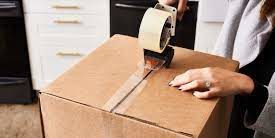Here’s how you can get your packaging right.
1. Measurement of the item
You’ll need to measure your item and ensure that you have the right size container for it. A cardboard box is usually ideal. Sometimes you’ll want something more substantial, like a flight case, or maybe a padded envelope inside a box or flight case will be required. Remember to allow for additional padding too, when choosing the size of the box.
2. Use Sturdy boxes
 If you regularly send and receive items from abroad, perhaps from your suppliers or customers, or other branches of your company. Then you’ll want to make sure that you have plenty of suitable boxes so that you don’t risk damaging the items you’re sending. Cereal boxes can be used as part of the packaging, but ideally, you’ll still need a sturdy box.
If you regularly send and receive items from abroad, perhaps from your suppliers or customers, or other branches of your company. Then you’ll want to make sure that you have plenty of suitable boxes so that you don’t risk damaging the items you’re sending. Cereal boxes can be used as part of the packaging, but ideally, you’ll still need a sturdy box.
3. Find the Best Flight Case
There’s a reason that flight cases are so-called, and they’re famous for a reason. No matter whether you’re sending a guitar, a record collection, or product samples, you’ll be able to find a flight case that fits. Spending a bit of money on a flight case will be worth it, especially if the contents are valuable or fragile.
Read More: Internet Advertising Agencies & The Entrepreneur’s Guide To Internet
4. Padding
Padding is essential, and when you consider that your parcel is going to be in a van, lorry, and in the hold of a plane, you’ll need to make sure that whatever you’re sending is well protected from any damage caused by travel and transport. Whilst you don’t expect any damage, you’ll be annoyed if your cargo is damaged due to insufficient packaging or because you skimped on appropriate boxes.
5. Packaging of the Item
 Those people purchasing new items will expect the original packaging. However, those buying in online auctions will sometimes be more understanding about wanting the original packaging. Retail packaging might add additional weight to the parcel without offering substantial protection. You’ll either need to advise the buyer that they can have the item in its original packaging, but it might cost more to send, and there could be a delay whilst you repack your parcel, or that you’ll send it without the original packaging.
Those people purchasing new items will expect the original packaging. However, those buying in online auctions will sometimes be more understanding about wanting the original packaging. Retail packaging might add additional weight to the parcel without offering substantial protection. You’ll either need to advise the buyer that they can have the item in its original packaging, but it might cost more to send, and there could be a delay whilst you repack your parcel, or that you’ll send it without the original packaging.
6. Strapping
Strapping can be used for larger parcels. You’ll want to make sure that seams and corners are well protected on larger parcels too. As your item is travelling abroad, you’ll want to make sure that it’s as well protected as possible.
7. Position of the item inside the box
Remembering to put your item in the middle of your box will help to ensure that it is at less risk of being damaged. Putting padding material all around it will help to cushion any bumps the box may have on its journey.
8. Be Cautious while sending liquids
Sending liquids presents its challenge. You’ll need to make sure that the container the liquid is in is well sealed so that the fluid can’t escape from the lid or the dispenser. Then the bottle will need to be placed carefully in a well-padded box. Remember that your liquid could damage other parcels if the item is not well packed.
9. Language on Your Parcel’s Label
As your parcel is going abroad, it’s a good idea to make sure that it’s well labelled in the destination country’s language. Just because you write that it’s fragile in English doesn’t mean that those handling your package in other countries will understand and comply.
10. Tracking Number
Remember to note the tracking number and give it to the recipient so that they can track the parcel. You’ll want to know when it has arrived, and so will they.
Now you know how to pack a parcel properly, what will you send abroad?

